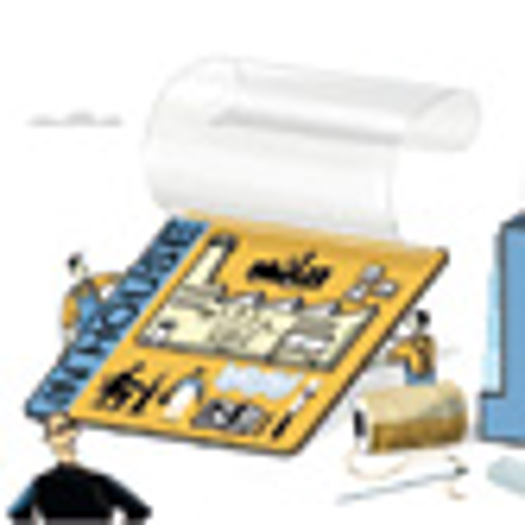The first ever PrintWeek finishing survey paints an interesting, if not entirely unexpected, portrait of the market. With the majority of the more than 380 respondents boasting an annual turnover of less then £500,000, it comes as little surprise to hear that typical annual spend on outsourcing of print services, for just shy of a quarter of all printers surveyed, checks in at between £10,000 to £20,000.
Slightly more surprising was the fact that 11% of respondents spend somewhere in the region of a whopping £100,000 to £250,000 on outsourcing.
Perfect binding (57%), foil blocking (50%), embossing (44%) and die-cutting (37%) are the most commonly outsourced finishing processes. This is a reflection of the fact that capital outlay on equipment that would enable a printer to bring these types of services in house, is relatively high. In terms of the processes that amount for the majority of money spent on outsourcing, perfect binding (13%) tops the chart again, with die-cutting (11%) and thermal laminating (B2) (5.8%) also figuring strongly.
Of the printers who responded to the online survey, 71% stated that their finishing department is occasionally a bottleneck for productivity, with 17% never experiencing any problems and 10% frequently running into issues.
The main finishing services that they currently offer in-house are somewhat unsurprisingly hand finishing (66%), perforating (61%), creasing (59%) and drilling (59%). This reflects the fact that the financial outlay on equipment that enables printers to offer these services is relatively low.
When it comes to potential future investments on in-house kit, 8% are eyeing up perfect binding machines and 6% are weighing up splashing out on PUR binding equipment, two of the most commonly outsourced finishing processes. After that, investment in die-cutting (5%), thermal laminating (4%) and bookletmaking (4%) are also under consideration. None of the printers surveyed expressed an interest in bringing very-large format guillotining or thermal laminating in-house, nor were any of them considering investing in pile turning equipment.
The good news for equipment manufacturers is that 8% of printers polled intend to invest in new equipment in the next six months, 17% in the next 12 months and 9% within the next two years. On the flipside, the majority of printers surveyed, 55%, stated that they currently have no plans to invest in new finishing kit whatsoever.
GRAPHS
Click here for graphs









